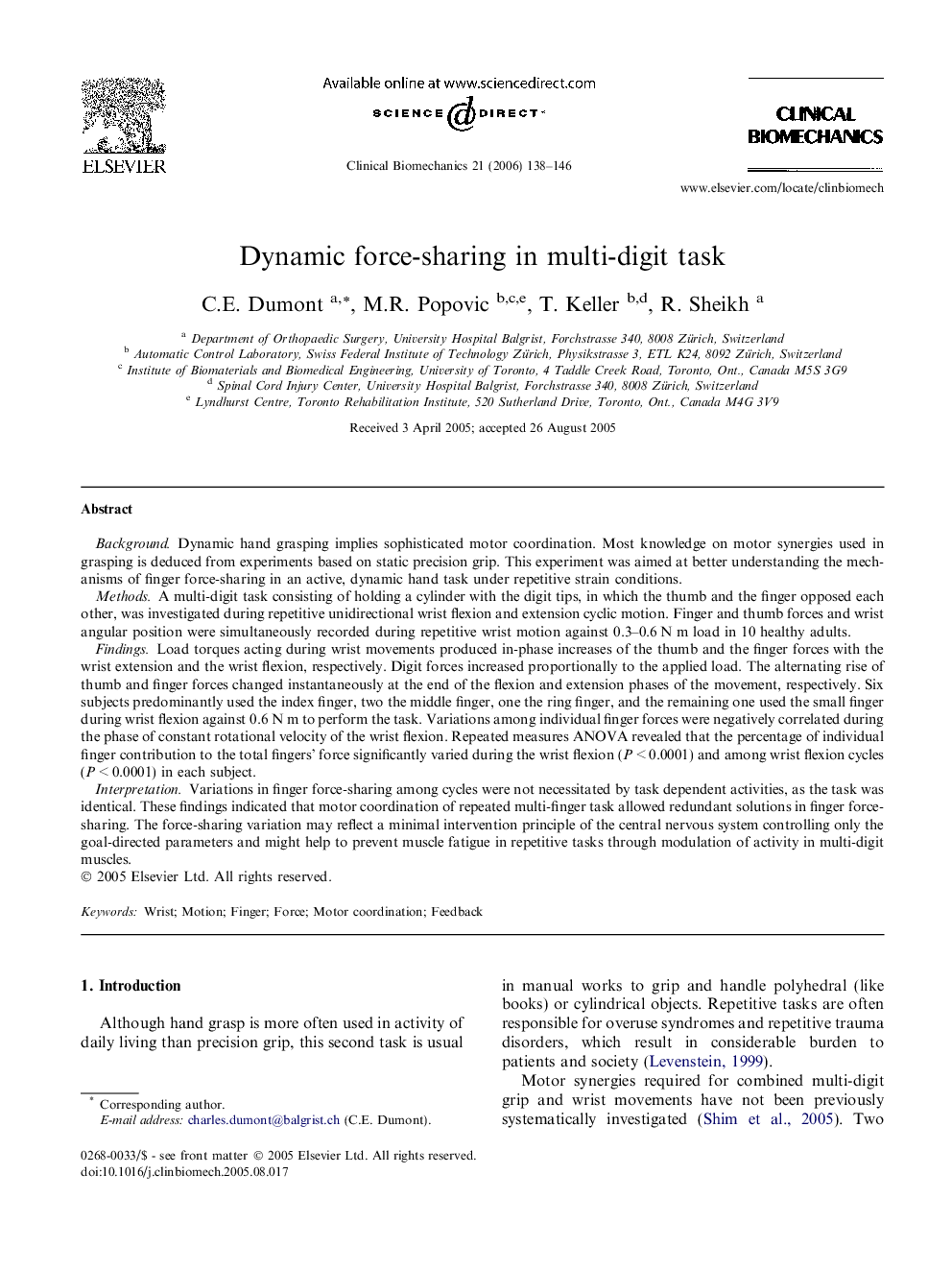| Article ID | Journal | Published Year | Pages | File Type |
|---|---|---|---|---|
| 4051773 | Clinical Biomechanics | 2006 | 9 Pages |
BackgroundDynamic hand grasping implies sophisticated motor coordination. Most knowledge on motor synergies used in grasping is deduced from experiments based on static precision grip. This experiment was aimed at better understanding the mechanisms of finger force-sharing in an active, dynamic hand task under repetitive strain conditions.MethodsA multi-digit task consisting of holding a cylinder with the digit tips, in which the thumb and the finger opposed each other, was investigated during repetitive unidirectional wrist flexion and extension cyclic motion. Finger and thumb forces and wrist angular position were simultaneously recorded during repetitive wrist motion against 0.3–0.6 N m load in 10 healthy adults.FindingsLoad torques acting during wrist movements produced in-phase increases of the thumb and the finger forces with the wrist extension and the wrist flexion, respectively. Digit forces increased proportionally to the applied load. The alternating rise of thumb and finger forces changed instantaneously at the end of the flexion and extension phases of the movement, respectively. Six subjects predominantly used the index finger, two the middle finger, one the ring finger, and the remaining one used the small finger during wrist flexion against 0.6 N m to perform the task. Variations among individual finger forces were negatively correlated during the phase of constant rotational velocity of the wrist flexion. Repeated measures ANOVA revealed that the percentage of individual finger contribution to the total fingers’ force significantly varied during the wrist flexion (P < 0.0001) and among wrist flexion cycles (P < 0.0001) in each subject.InterpretationVariations in finger force-sharing among cycles were not necessitated by task dependent activities, as the task was identical. These findings indicated that motor coordination of repeated multi-finger task allowed redundant solutions in finger force-sharing. The force-sharing variation may reflect a minimal intervention principle of the central nervous system controlling only the goal-directed parameters and might help to prevent muscle fatigue in repetitive tasks through modulation of activity in multi-digit muscles.
